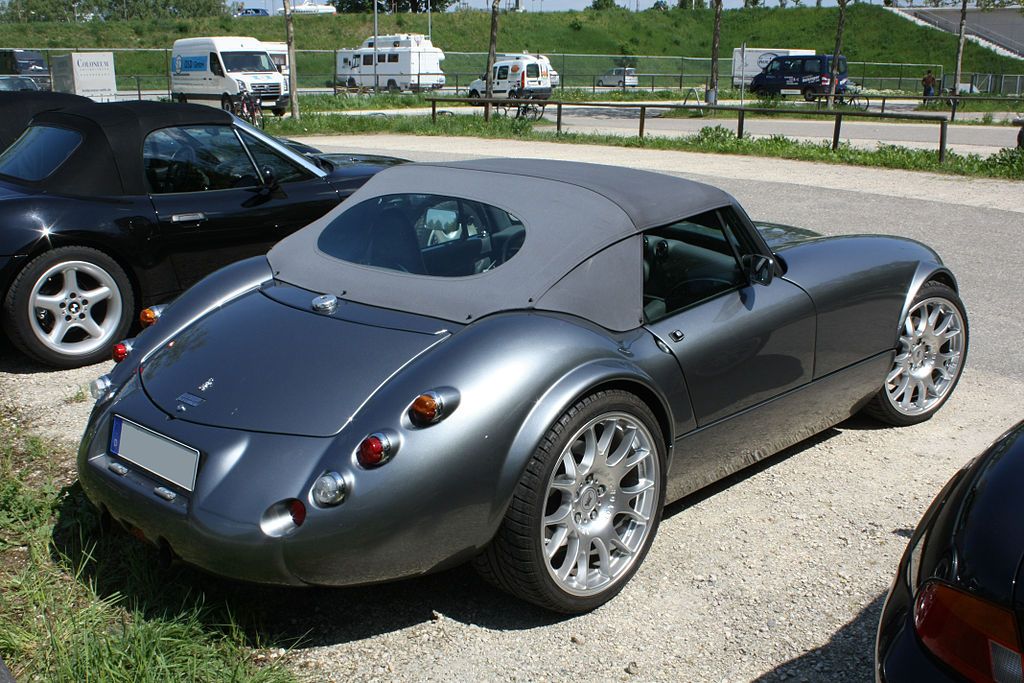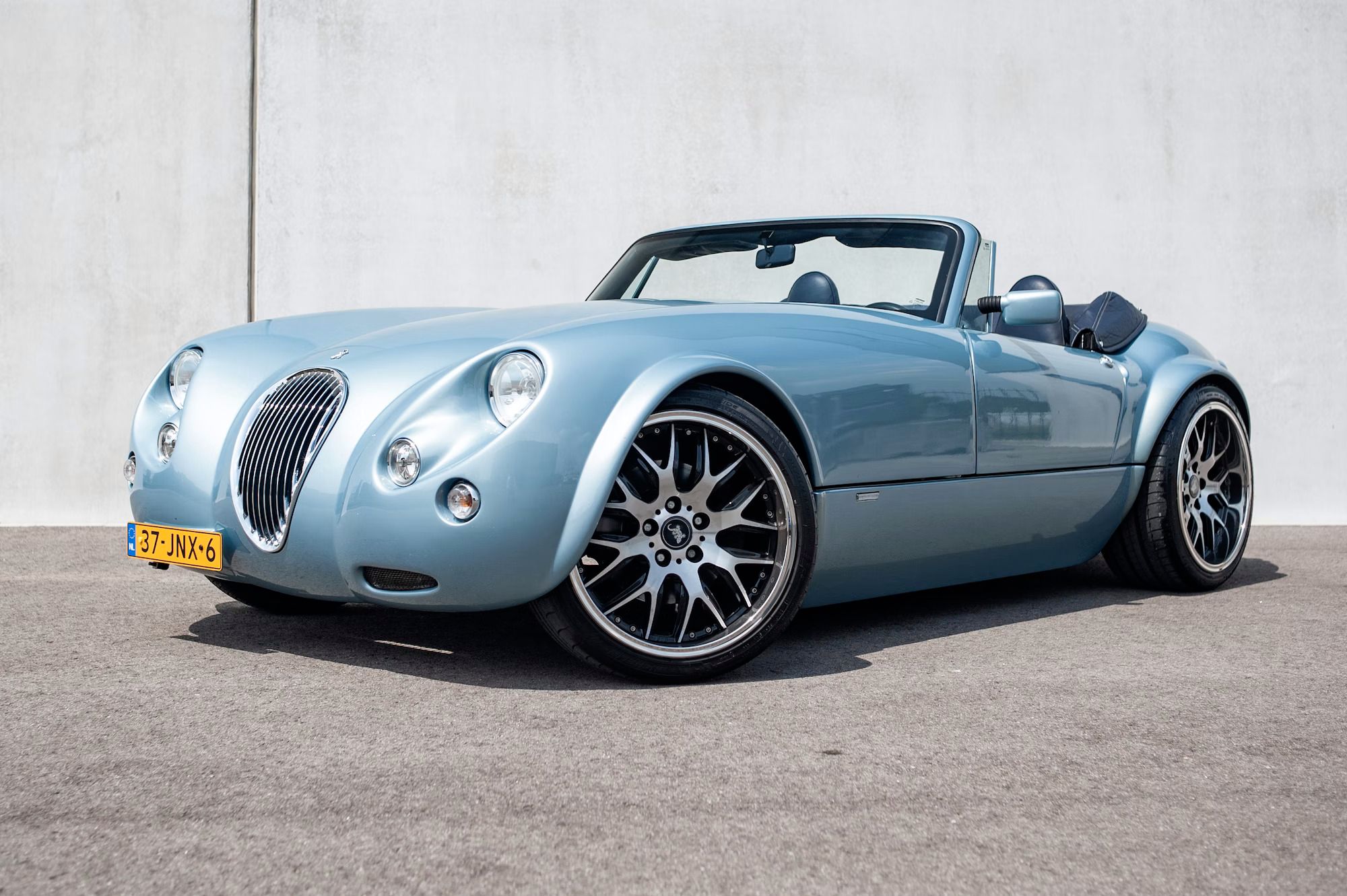Martin Wiesmann and Friedhelm Wiesmann, two German brothers with a passion for vehicles, created Wiesmann. And hand-built custom convertibles and coupes are the company’s expertise. Their company aims to construct a car that “clings to the road like geckos to a wall,” which is displayed in their corporate logo.
Wiesmann started as a custom hard-top producer for convertibles, and they continue to do so today. The company began in 1985 when the two brothers discovered that the sports vehicles on show at the Essen Motor Show lacked one of the most crucial traits in their opinion: passion. As a result, they started on a journey to develop their own sports car with a fascinating old-fashioned style and cutting-edge technology.
They established their first facility in 1988 and made their first appearance as a vehicle builder at that year’s Essen Motor Show. Then, two years later, the business presented its first car: the Wiesmann MF30 Roadster. BMW supplied the car’s engine and gearbox components, and Wiesmann opted to continue working with BMW because of the model’s quick success on the German market.
Let’s take a deep dive into the Wiesmann MF30
The MF30’s Design

The date of when the automobile got released is a little imprecise; therefore, if we’re estimating, then it was between 1990-1993. MF stands for Martin Friedhelm, the brother’s name, but there’s no obvious explanation for what the “30” represents.
The car’s chassis comprises a hot-dipped galvanized steel pipe structure with an aluminum finish, with fiberglass-composite panels creating a curved and distinctive body. The 3860 mm length car weights as little as 1.080 kg as a consequence. The car has the BMW’s M54 i6 engine, which was previously seen in the BMW 530i E60 (2003–2005).
Wiesmann claimed a max speed of 143 mph and a time of 5.9 seconds to reach 62 mph 100 from a standstill, although they made it obvious that the vehicle is a cruiser rather than a record-breaking machine on the Autobahn.
The engine was the only one available at the time. Customers had the choice to pick between three different gearboxes. With the limited engine choices, Wiesmann made sure the interior was entirely adjustable, with the caveat that Wiesmann could not fit current safety precautions such as an airbag system.
The MF3: The Car That Continued The MF30’s Legacy

The MF3 Roadster is the ideal nostalgia vehicle, particularly for those who want to relive the golden days of roadster racing, when they were more than simply gigantic engine monsters. The car can go from 0-62 mph in 4.4 seconds, and it has a top speed of 158 mph.
The vehicle displays a classic design from bygone ages. A laminated windshield, hand-wound windows composed of safety glass, green-tinted glass, a mechanical fabric hood, and a free choice of exterior paint finishes make up the car’s body.
It has a customized interior with over 400 different types of leather for every nook and crevice of the car and a cockpit lighting arrangement. The interior doesn’t contain any carbon fiber, but you may pack it with as much leather.
The Wiesmann MF3 Roadster has a 3.2-liter in-line six-cylinder engine that produces 343 horsepower and 269 lb/ft of torque. This engine comes with a five-speed manual transmission or a six-speed manual transmission.
The MF3 Roadster safety features integrated side-impact protection, steering, power steering with variable steering assistance, an EWS II immobilizer, three-point safety seat belts, and ABS and DSC systems.
The major difference between the MF3 and its predecessor is the engine. The MF3 has an S54 rather than an M54 in the newer vehicle. The Wiesmann MF3 Roadster is a one-of-a-kind blend of the old and new school. As a result, comparing it to similar automobiles is difficult. The MF3 Roadster will put you back around $95,700.
Future Plans For Wiesmann
Wiesmann supporters got excited when project gecko got revealed in 2019, considering that the company had been on hiatus since 2014 and no one had heard from them. They went silent after the revelation and have subsequently notified their followers that a new sports car will come later this year, with the code name Project Gecko currently circulating.
The aesthetic of the Project Gecko is comparable to that of older Wiesmann models. It has a retro appeal with a broad nose and arching roofline to generate classic sports car styling. Bulbous fenders and faultless shaping give the automobile a classic appeal. The rear deck comes with a fixed-wing, and the exhausts are incorporated into the bumper. There was a rumor that some of its body panels were to incorporate carbon fiber to keep the weight down.
Roheen Berry, the owner of Wiesmann, is optimistic about the project. Berry claims in a press statement that the automobile will “electrify” Wiesmann. The name of this new project is “Thunderball,” which leads admirers to believe it would be an electric car.
Another speculation regarding the car is that it will come with an automatic gearbox. Because the prototype is using an automatic transmission, another factor is that the GT MF5 and GT MF4, Wiesmann’s last two vehicles, both featured just 6-speed automatic gearboxes.
